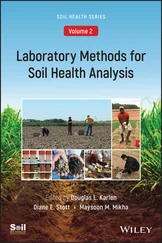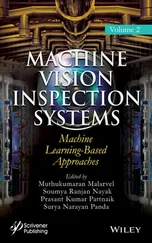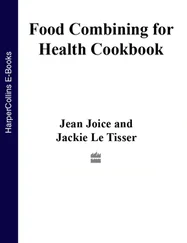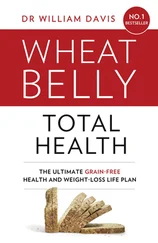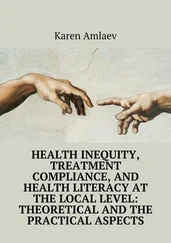Approaches to Soil Health Analysis, Volume 1
Здесь есть возможность читать онлайн «Approaches to Soil Health Analysis, Volume 1» — ознакомительный отрывок электронной книги совершенно бесплатно, а после прочтения отрывка купить полную версию. В некоторых случаях можно слушать аудио, скачать через торрент в формате fb2 и присутствует краткое содержание. Жанр: unrecognised, на английском языке. Описание произведения, (предисловие) а так же отзывы посетителей доступны на портале библиотеки ЛибКат.
- Название:Approaches to Soil Health Analysis, Volume 1
- Автор:
- Жанр:
- Год:неизвестен
- ISBN:нет данных
- Рейтинг книги:3 / 5. Голосов: 1
-
Избранное:Добавить в избранное
- Отзывы:
-
Ваша оценка:
- 60
- 1
- 2
- 3
- 4
- 5
Approaches to Soil Health Analysis, Volume 1: краткое содержание, описание и аннотация
Предлагаем к чтению аннотацию, описание, краткое содержание или предисловие (зависит от того, что написал сам автор книги «Approaches to Soil Health Analysis, Volume 1»). Если вы не нашли необходимую информацию о книге — напишите в комментариях, мы постараемся отыскать её.
A concise survey of soil health analysis and its various techniques and applications Soil Health, Volume One: Approaches to Soil Health Analysis
Approaches to Soil Health Analysis, Volume 1 — читать онлайн ознакомительный отрывок
Ниже представлен текст книги, разбитый по страницам. Система сохранения места последней прочитанной страницы, позволяет с удобством читать онлайн бесплатно книгу «Approaches to Soil Health Analysis, Volume 1», без необходимости каждый раз заново искать на чём Вы остановились. Поставьте закладку, и сможете в любой момент перейти на страницу, на которой закончили чтение.
Интервал:
Закладка:
Summary and Conclusion
Efforts to build agricultural resilience through high functioning soil resources are still in their infancy, as documented by national adoption rates for soil health associated practices, and especially soil health management systems across entire human‐managed landscapes (Karlen & Rice, 2015; Wade et al., 2015). Fortunately, federal, state, NGO and private‐sector organizations and individuals are working diligently to advance awareness of soil health and the management practices that improve it. Through increased research, on farm implementation, and policy changes progress is inevitable. The focus in “Approaches to Soil Health Analysis” is to build standardized, basic capacity to better inform management decisions and quantify outcomes of soil health management system implementation.
Soil health developments during the past three decades have been progressive, provocative, and are thus still under debate. As such, this two‐volume contribution in no way is conceived as providing any final answers, but is envisioned as a step toward incorporating soil health into mainstream soil, water, and environmental science programs, and more importantly into every day agricultural management. Hopefully, they will also open new doors and stimulate additional study and education needed to encourage humankind to recognize the truth in Larson’s often quoted statement that soil is “the thin layer covering the planet that stands between us and starvation” (Karlen et al., 2014).
References
1 Acton, D. F., & Gregorich, L. J. (1995). The health of our soils: Toward sustainable agriculture in Canada. Pub. No. 1906/E Centre for Land and Biological Resources Research. Ottawa: Agriculture and Agri‐Food Canada. https://doi.org/10.5962/bhl.title.58906
2 Alexander, M. (1971). Agriculture’s responsibility in establishing soil quality criteria. In Environmental improvement: Agriculture’s challenge in the seventies (pp. 66–71). Washington, DC: National Academy of Sciences.
3 Altieri, M. A. (1991a). How best can we use biodiversity in agroecosystems. Outlook Agricultre, 20, 15–23. https://doi.org/10.1177/003072709102000105
4 Altieri, M. A. (1991b). Increasing biodiversity to improve insect pest management in agro‐ecosystems. In D. L. Hawksworth (Ed.), The biodiversity of microorganisms and invertebrates: Its role in sustainable agriculture (pp. 165–182). UK: CAB International.
5 Andrén, O., & Balandreau, J. (1999). Biodiversity and soil functioning: From black box to can of worms? Applications in Soil Ecology, 13, 105–108. https://doi.org/10.1016/S0929‐1393(99)00025‐6
6 Andrews, S. S., Karlen, D. L., & Cambardella, C. A. (2004). The soil management assessment framework: A quantitative soil quality evaluation method. Soil Science Society of America Journal, 68, 1945–1962. https://doi.org/10.2136/sssaj2004.1945
7 Basche, A., & DeLonge, M. (2017). The impact of continuous living cover on soil hydrologic properties: A meta‐analysis. Soil Science Society of America Journal, 81(5), 1179–1190. https://doi.org/10.2136/sssaj2017.03.0077
8 Boehm, M., & Burton, S. (1997). Socioeconomics in soil‐conserving agricultural systems: Implications for soil quality. In E. G. Gregorich & M. R. Carter (Eds.), Soil quality for crop production and ecosystem health (pp. 293–312). Amsterdam, Netherlands: Elsevier Science Publishers. https://doi.org/10.1016/S0166‐2481(97)80040‐2
9 Brussaard, L., Kuyper, T. W., Didden, W. A. M., de Goede, R. G. M., & Bloem, J. (2004). Biological soil quality from biomass to biodiversity – Importance and resilience to management stress and disturbance. In P. Schjønning, S. Elmholt, & B. T. Christensen (Eds.), Managing soil quality: Challenges in modern agriculture (pp. 139–161). Wallingford, U.K: CABI Publishing.
10 BASF. 2020. Poncho Votivo 2.0 Seed Treatment System. https://agriculture.basf.us/crop‐protection/products/poncho‐votivo‐2‐0.html(verified 13 July 2020).
11 Carter, M. C., Gregorich, E. G., Anderson, D. W., Doran, J. W., Janzen, H. H., & Pierce, F. J. (1997). Concepts of soil quality and their significance. In E. G. Gregorich & M. R. Carter (Eds.), Soil quality for crop production and ecosystem health (pp. 1–19). Amsterdam, Netherlands: Elsevier Science Publishers. https://doi.org/10.1016/S0166‐2481(97)80028‐1
12 Chendev, Y. G., Sauer, T. J., Ramirez, G. H., & Burras, C. L. (2015). History of East European Chernozem soil degradation: Protection and restoration by tree windbreaks in the Russian Steppe. Sustainability, 7(1), 705–724. https://doi.org/10.3390/su7010705
13 Congreves, K. A., Hayes, A., Verhallen, E. A., & Van Eerd, L. L. (2015). Long‐term impact of tillage and crop rotation on soil health at four temperate agroecosystems. Soil Tillage Research, 152, 17–28. https://doi.org/10.1016/j.still.2015.03.012
14 DeLong, C., Cruse, R., & Wiener, J. (2015). The soil degradation paradox: Compromising our resources when we need them the most. Sustainability, 7(1), 866–879. https://doi.org/10.3390/su7010866
15 Dick, R. P. (1997). Soil enzyme activities as integrative indicators of soil health. In C. Pankhurst, B. M. Doube, & V. V. S. R. Gupta (Eds.), Biological indicators of soil health (pp. 121–156). New York: CAB International.
16 Doran, J. W., Coleman, D. C., Bezdicek, D. F., & Stewart, B. A. (Eds.) (1994). Defining soil quality for a sustainable environment. SSSA Special Publication No. 35. Madison, WI: SSSA.
17 Doran, J. W., & Parkin, T. B. (1994). Defining and assessing soil quality. In J. W. Doran, D. C. Coleman, D. F. Bezdicek, & B. A. Stewart (Eds.), Defining soil quality for a sustainable environment (pp. 3–21). SSSA Special Publication No. 35. Madison, WI: SSSA. https://doi.org/10.2136/sssaspecpub35
18 Doran, J. W., & A. J. Jones (Eds.) (1996). Methods for assessing soil quality. SSSA special Publication No. 49. Madison, WI: SSSA.
19 Doran, J. W., & M. R. Zeiss. (2000). Soil health and sustainability: Managing the biotic component of soil quality. Applied Soil Ecology, 15, 3–11. https://doi.org/10.1016/S0929‐1393(00)00067‐6
20 Doran, J. W. (2002). Soil health and global sustainability: Translating science into practice. Agriculture Ecosystems Environment, 88(2), 119–127. https://doi.org/10.1016/S0167‐8809(01)00246‐8
21 Ellert, B. H., Clapperton, M. J., & Anderson, D. W. (1997). An ecosystem perspective of soil quality. In E. G. Gregorich & M. R. Carter (Eds.), Soil quality for crop production and ecosystem health (pp. 115–141). Elsevier Amsterdam, Netherlands: Science Publishers. https://doi.org/10.1016/S0166‐2481(97)80032‐3
22 Frey, S. D., Elliott, E. T., & Paustian, K. (1999). Bacterial and fungal abundance and biomass in conventional and no‐tillage agroecosystems along two climatic gradients. Soil Biology & Biochemistry, 31(4), 573–585. https://doi.org/10.1016/S0038‐0717(98)00161‐8
23 Gelaw, A. M., Singh, B. R., & Lal, R. (2015). Soil quality indices for evaluating smallholder agricultural land uses in northern Ethiopia. Sustainability, 7(3), 2322–2337. https://doi.org/10.3390/su7032322
24 General Mills. (2020). Regenerative Agriculture. https://www.generalmills.com/Responsibility/Sustainability/Regenerative‐agriculture(verified 13 July 2020).
25 Glæsner, N., Helming, K., & de Vries, W. (2014). Do current European policies prevent soil threats and support soil functions. Sustainability, 6(12), 9538–9563. https://doi.org/10.3390/su6129538
26 Grayston, S. J., Wang, S., Campbell, C. D., & Edwards, A. C. (1998). Selective influence of plant species on microbial diversity in the rhizosphere. Soil Biology & Biochemistry, 30(3), 369–378. https://doi.org/10.1016/S0038‐0717(97)00124‐7
27 Gregorich, E. G., & Carter, M. R. (Eds.) (1997). Soil quality for crop production and ecosystem health. Amsterdam, Netherlands: Elsevier Science Publishers.
Читать дальшеИнтервал:
Закладка:
Похожие книги на «Approaches to Soil Health Analysis, Volume 1»
Представляем Вашему вниманию похожие книги на «Approaches to Soil Health Analysis, Volume 1» списком для выбора. Мы отобрали схожую по названию и смыслу литературу в надежде предоставить читателям больше вариантов отыскать новые, интересные, ещё непрочитанные произведения.
Обсуждение, отзывы о книге «Approaches to Soil Health Analysis, Volume 1» и просто собственные мнения читателей. Оставьте ваши комментарии, напишите, что Вы думаете о произведении, его смысле или главных героях. Укажите что конкретно понравилось, а что нет, и почему Вы так считаете.




